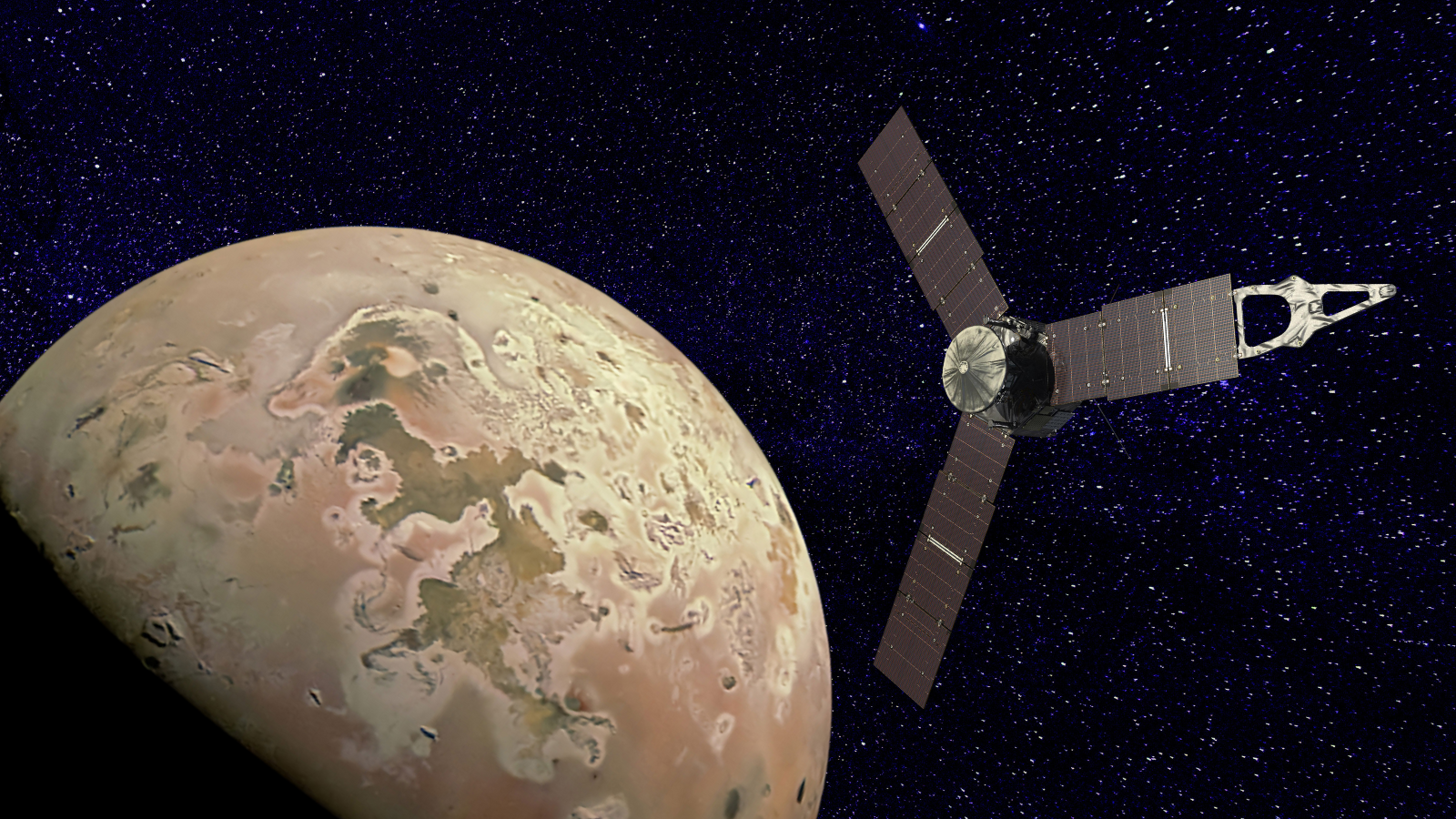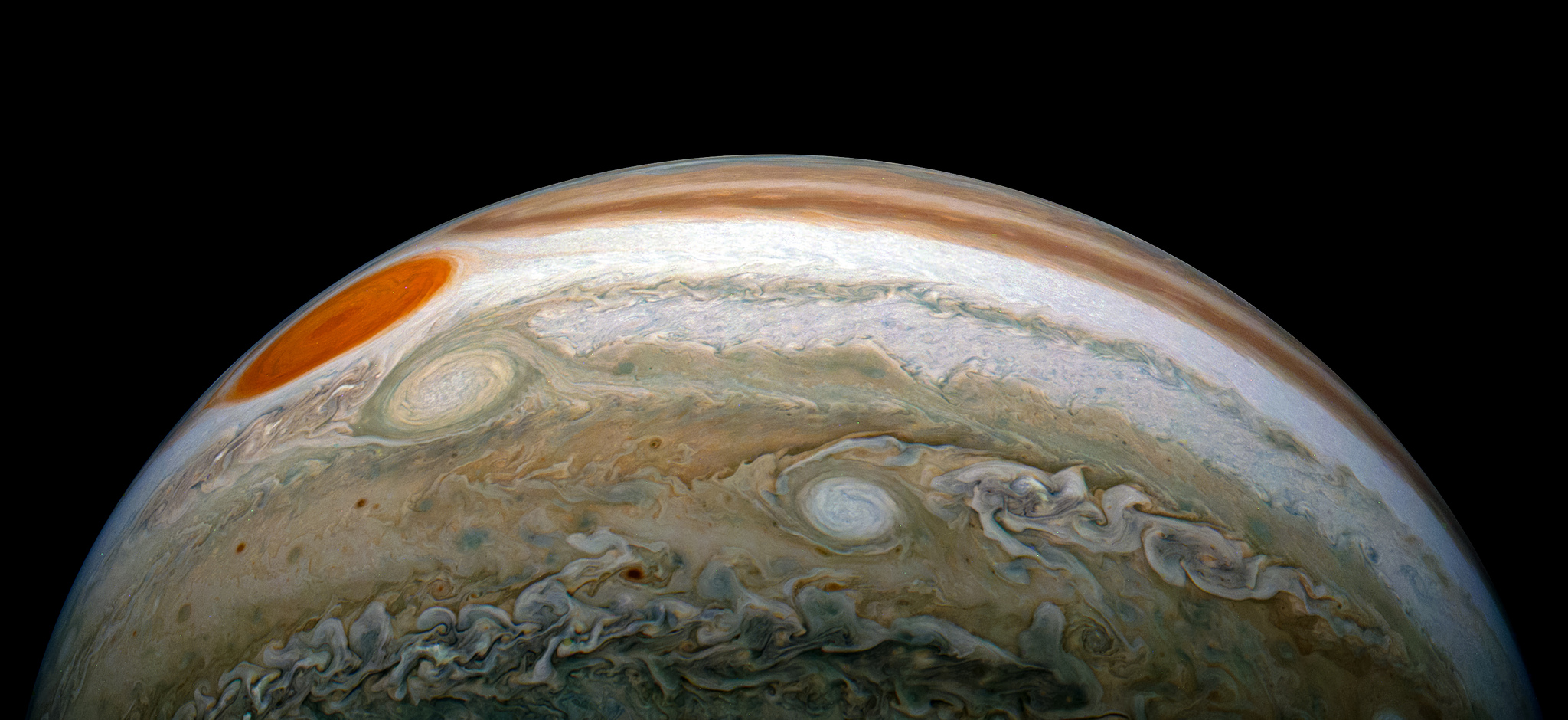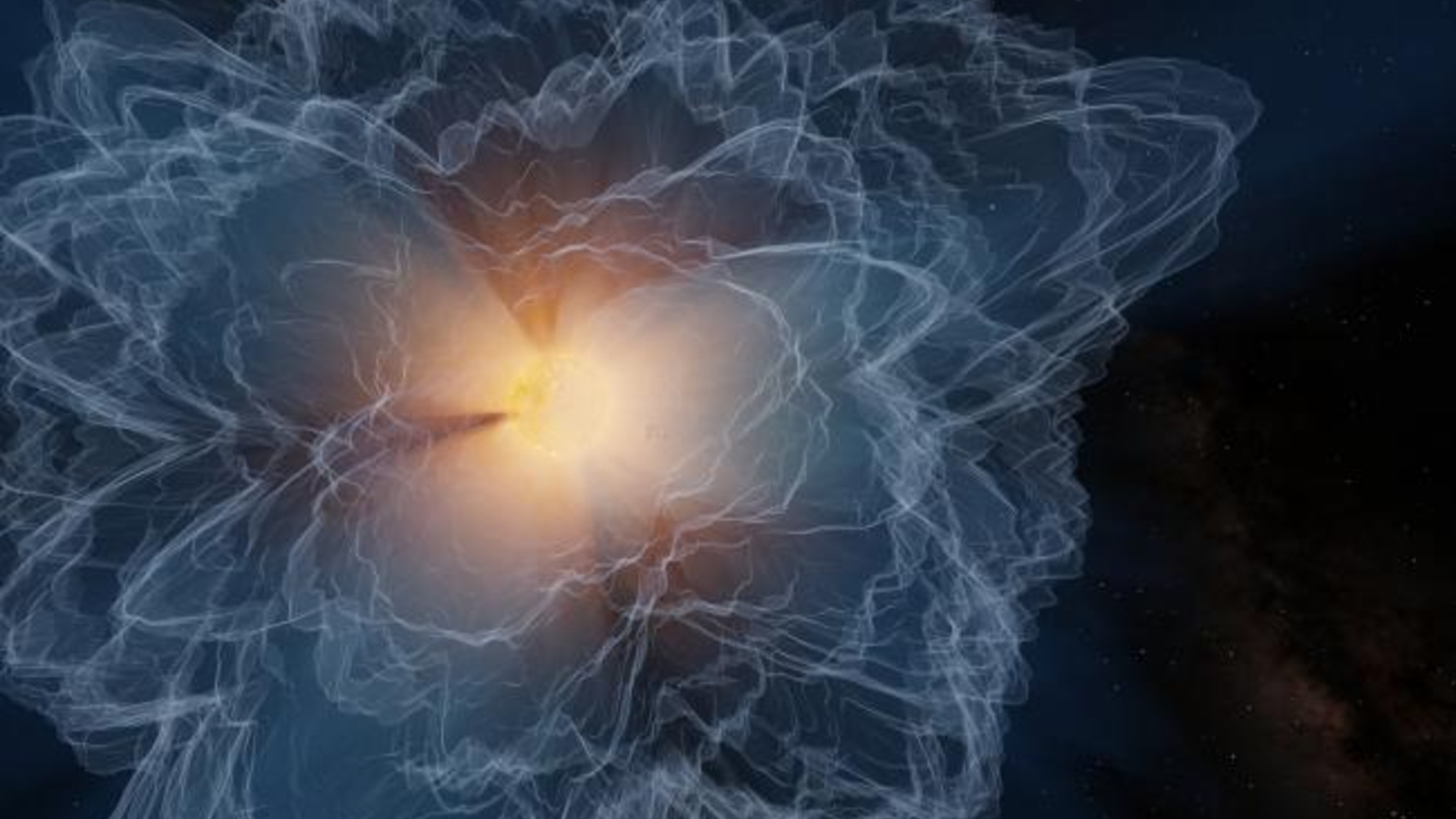NASA's Juno spacecraft will get its closest look yet at Jupiter's moon Io on Dec. 30
Juno will feel the heat of the most volcanic body in the solar system, during the closest approach any spacecraft has made in 20-plus years.

NASA's Juno mission will come closer to Jupiter's moon Io than any spacecraft has in around 20 years on Saturday (Dec. 30).
The flyby will bring Juno to around 930 miles (1,500 kilometers) of Io, the most volcanic body in the solar system. This will allow the spacecraft to take a detailed look at Io as it gathers a treasure trove of hot data. It's close, but not the closest ever glimpse by a spacecraft: that record belongs to NASA's Galileo spacecraft, which skimmed just 181 kilometers (112 miles) above Io's south pole in 2001.
Juno launched on August 5, 2011, and reached the gas giant Jupiter, the largest planet in the solar system, on July 4, 2016, after a 1.7 billion-mile (2.8-billion-kilometer) journey. Since then, the Jupiter orbiter has made 56 flybys of the gas planet, collecting data on it and its moons, and is about to begin its next.
"By combining data from this flyby with our previous observations, the Juno science team is studying how Io’s volcanoes vary," Southwest Research Institute scientist and Juno principal investigator Scott Bolton said in a statement. "We are looking for how often they erupt, how bright and hot they are, how the shape of the lava flow changes, and how Io’s activity is connected to the flow of charged particles in Jupiter’s magnetosphere."
Related: Jupiter's moon Io is covered in active volcanoes. Now we have the 1st map of them
Now in the third year of its extended mission, with its primary mission having ended in July 2021, Juno will make another close flyby of Io on Feb. 3, 2024, when it comes to within around 930 miles (1,500 km) of the volcanic surface of this Jovian world.
The Dec. 2023 and Feb. 2024 flybys of Io will add to the wealth of information that scientists have gathered about Io thanks to Juno, which has been monitoring its volcanic activity from distances that range from 6,830 miles (11,000 km) to over 62,100 miles (100,000 km). In its time of operation, the NASA spacecraft has also supplied researchers with their first views of Io's north and south poles.
Why investigate Jupiter's "tortured moon" Io?
The surface of Io, which is around the size of Earth's moon, is littered with hundreds of actively erupting volcanoes capable of blasting lava dozens of miles into the thin, waterless atmosphere of the Jovian moon.
Breaking space news, the latest updates on rocket launches, skywatching events and more!
The innermost Galilean satellite of Jupiter, one of the four large Jovian moons, Io, is believed to be so extremely volcanic because of the gravitational influence of the gas giant planet and that of its three other Galilean moons — Europa, Ganymede, and Callisto.
This generates tidal forces that are so powerful they can cause the surface of Io to rise and fall by as much as 330 feet (100 meters), triggering extreme volcanism.
“With our pair of close flybys in December and February, Juno will investigate the source of Io’s massive volcanic activity, whether a magma ocean exists underneath its crust, and the importance of tidal forces from Jupiter, which are relentlessly squeezing this tortured moon,” Bolton added.
Io's volcanism is necessary to understand because it likely has an impact on the wider Jovian system. For example, volcanic particles escaping from the atmosphere of Io are thought to become trapped by the magnetic field of Jupiter, forming a hot donut of plasma around the gas giant planet.
How does Juno investigate Io
During the flyby of Io this weekend, all of Juno's three cameras will be active. The Jovian Infrared Auroral Mapper (JIRAM), will be collecting information about the volcanic moon's heat signature locating volcanoes and calderas across the Jovian moon. Meanwhile, the navigational star camera, the Stellar Reference Unit, will collect the highest resolution images of the volcano-riven surface of Io yet gathered.
Last, but by no means least, JunoCam, which is included in Juno's suite of instruments to drive public engagement, will catch full-color visible-light images of the volcanic moon.
JunoCam was designed to last for just eight flybys of Jupiter, making the images of Io it will collect during this 57th flyby even more remarkable. All three cameras and the Juno spacecraft itself have had to brave and withstand the punishing radiation environment around Jupiter, arguably the harshest in the solar system, barring that of the sun, to continue this remarkable science mission. But, this punishment has begun to show.
"The cumulative effects of all that radiation has begun to show on JunoCam over the last few orbits," Juno project manager Ed Hirst said. "Pictures from the last flyby show a reduction in the imager's dynamic range and the appearance of 'striping' noise. Our engineering team has been working on solutions to alleviate the radiation damage and to keep the imager going."

Following Juno's orbit of Io in Feb. 2024, the NASA orbiter will skim the Jovian moon on each of its subsequent orbits of Jupiter, but each will become subsequently further away from Io's volcanic surface.
The first flyby after Feb will be at an altitude of about 10,250 miles (16,500 km) over Io, while the last will bring the NASA spacecraft to within just around 71,450 miles (115,000 kilometers) of the volcanic moon.
Juno will also now begin to experience periods during which Jupiter eclipses the sun, blocking its access to solar power and leading it to experience darkness for the first time since it left Earth.
This isn't expected to impact the operation of Juno, and from April 2024, the spacecraft will use these occultation events to assist its Gravity Science Experiment to investigate the composition of the upper atmosphere of Jupiter and collect information about the planet's shape and its interior structure.
Juno's extended mission investigating the Jovian system will last until Sept. 2025, when NASA says the spacecraft will reach the end of its life and will likely be intentionally crashed into the atmosphere of the gas giant.

Robert Lea is a science journalist in the U.K. whose articles have been published in Physics World, New Scientist, Astronomy Magazine, All About Space, Newsweek and ZME Science. He also writes about science communication for Elsevier and the European Journal of Physics. Rob holds a bachelor of science degree in physics and astronomy from the U.K.’s Open University. Follow him on Twitter @sciencef1rst.


